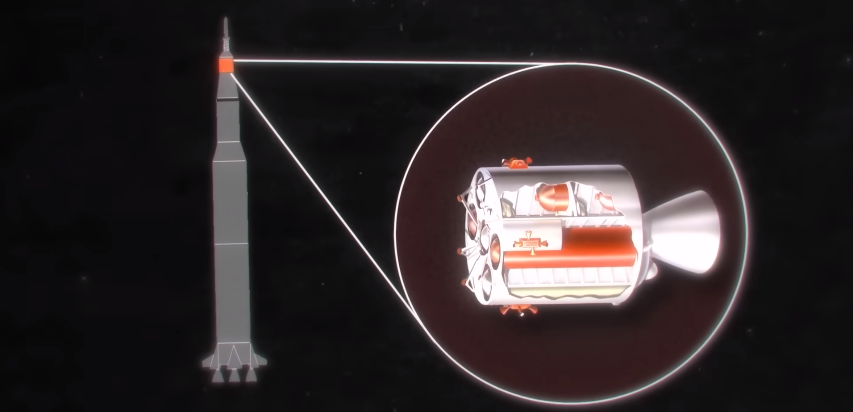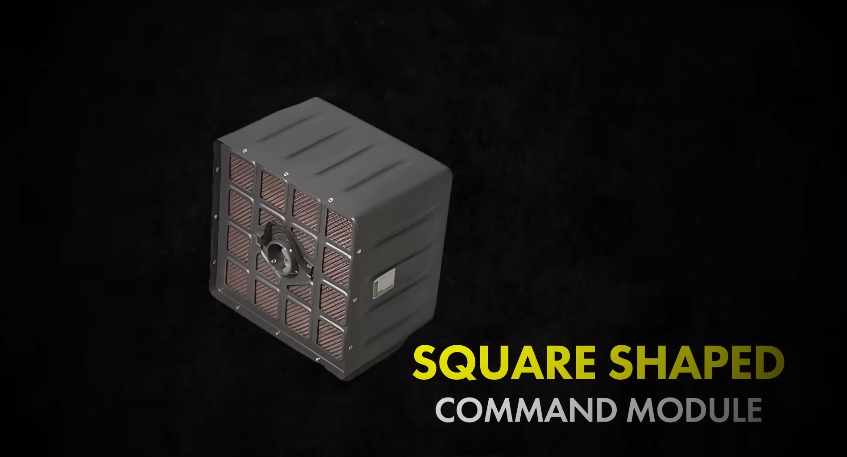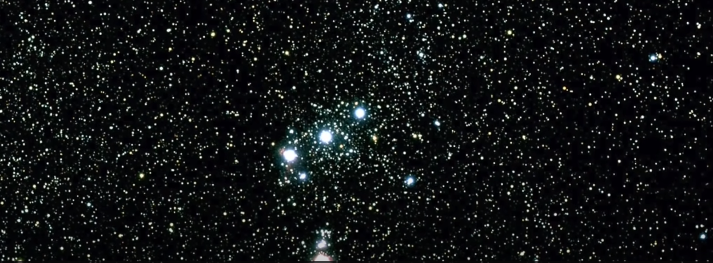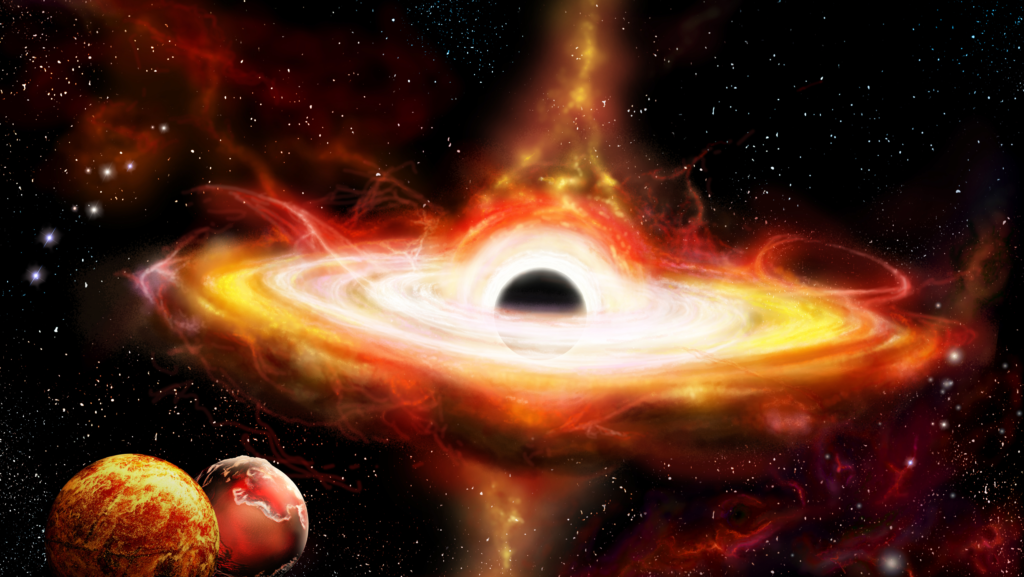On 11th April 1970, rocket launched for the Apollo 13 mission from Kennedy space center in America. Three astronauts were on it going to the moon. But the interesting thing was that not even a year had passed since the day when Neil Armstrong stepped on the moon for the first time.
This was already the third NASA mission to send humans to the moon. Seeing the success of the last two missions, the astronauts in this rocket were very confident about their mission and their dream. Their dream was to set foot on the moon. But at that time they were unaware that their dream would never come true.
A huge Bang
In April 1970, when the spacecraft was about 330,000 km away from the Earth, they had a long bang, suddenly. A huge bang that shook the entire spacecraft. Within a few seconds, the warning lights and alarms start going on, Loudly. It was found that one of the oxygen tanks hard burst. And the other oxygen tank was leaking rapidly. The Mission control on the ground couldn’t believe it. They believed that the instruments were malfunctioning. But the astronauts in the spacecraft could see through the window that the air was leaking.
On the other hand they see that because of the blast it was going kilometers away from the Earth every second. Within a few hours, the astronauts in Apollo 13 were so far away from the Earth that it became a new record.
To date, no human has gone so far from the Earth as these three astronauts did during the Apollo 13 mission. Forget landing on the moon, the question back then was whether they could return to Earth alive. This is the distressing story of Apollo 13.
Will they return alive?
In 1961, American president John F Kennedy promised the world that before the end of the decade, he would have human on the moon. This promise should be seen in the context of the Cold War. At that time, America and the Soviet Union were engaged in race. A space race. Who will be the leader in the field of technology?
In 1969 both Apollo 11 and Apollo 12 missions were successful. Astronauts did not only step on the moon but also safely returned to Earth. Kennedy’s promise was fulfilled. But it had a side-effect right after it that people’s and government’s interest in spending money on space decreased drastically.
It’s obvious that people were excited to see a man step on the moon for the first time. But people cannot be so excited for the second third and fourth time.
For this reason, the American government cut NASA’s budget. And many future missions that were planned for the new few years.
Like Apollo 20 were cancelled. That’s why the Apollo 13 mission came at a crucial time in the history of space travel. NASA had to prove to the America government that it was still worth spending money on space. That’s why the primary mission object of Apollo 13 was not only to inspect and survey the moon’s soil but to also develop the human capability to work in the moon’s environment.
The design of Apollo 13 spacecraft was similar to that of the previous space missions. Mainly, there were four main components command module, service module, lunar module, and launch escape system.

The spacecraft was launched on a Saturn V rocket.
All three astronauts were seated in the command module, which was the main part of the spacecraft, but it was a small part.
Command Module

The command module is just this cone shape and has a diameter of 13 feet. All the instruments panels, navigation gear, radios, life-support system, and small engines were all in this command module.
Service Module

The second most important part of the service, module which has the most of the oxygen for the astronauts. It had some more engines too and few cells to generate electricity. The command and service module is often collectively called a command and service module or CSM in short form.
They are connected during the entire mission until the astronauts return to Earth. And only during the re-entry to Earth are they separated from each other.
Lunar Module
The third part was the lunar module, which was actually supposed to land on the moon. And once the work on the moon was over, it was supposed to get attached to the CSM module once again.
Launch Escape System
The fourth part launch escape system was not so important for the mission. Its only task was to protect the astronauts from an accident during the launch. It work like this. If there is an accident during the rocket launch and the rocket catches fire, it safely ejects the astronauts and takes them away from the accident.
Apollo 13 launch safely
On 11th April 1970, since Apollo 13, launch safely and successfully the LES was not needed. Three astronauts were on the spacecraft. Commander Jim Lovell, the pilot of the lunar module Fred Haise, and the third pilot of the command module Jack Swigert. Coincidentally according to the original plan, none of these three were chosen for the mission.
Originally three different astronauts were chosen for this mission. But they all had different problems because of which they were not able to participate in this mission.
For this reason, the crew of these three astronauts takes off from the Earth. To see this rocket launch there were around 200,000 spectators on the ground. This was a small number compare to the Apollo 11 lift-off the previous year. That had 7 million spectators for the rocket launch.
Apollo 13 Mission
NASA again realized how quickly people lost their interest in space exploration. But it we talk about the mission this spacecraft took off smoothly towards its destination. It was supposed to take three days for them to reach the Fra Maura crater of the moon. This is a big hole on the moon surface. A creator. Which is believed to contain a lot of information not only about the moon but also about the earth.
The biggest problem during the first two days of the flight was with me astronaut Jack Swigert realized that he had forgotten to file his income tax return. He asked the mission control on Earth whether he could get an extension. He got a good-humoured reply that he could get a 60 day extension. This conversation proves that everything was going right.
During the first two days there were no problem in the mission. At 46 hours 43 minutes of the mission, the capsule communicator on duty at that time, said that the spacecraft was in a good shape and that they were bored sitting here.
Things were going so smoothly that people were getting bored. By the way, you will feel very strange to hear this, but intentionally giving yourself time to get bored is a good habit, in my opinion.
The third day of the mission 13 April the crew is told that they have to do some tests on the lunar module. And apart from this, they have to do a broadcast for the television. They will use the cameras to show the interiors of the command module and service module to the world.
Blast in Spacecraft
Now the audience interest in this was so low that no television network showed this broadcast at that time. About 6 1/2 minutes after the end of the TV broadcast, the flight controller on the ground asked astronaut Swigart to check the oxygen level. There was nothing unusual in this. It was a routine check of the oxygen tanks in the service module. And will this check was being done, suddenly a huge explosion occurred. Many warning lights and alarms went off. As I told you at the beginning of the article astronauts into space craft were largely in shock.
Commander Lovell contacted Mission control and said “Houston, we’ve had a problem.” It turned out that one tank of oxygen was completely empty and the oxygen level in the other tank was going down rapidly. Mission control on the ground first through that the instruments must be showing the wrong data, but that was the truth.
Everyone needed to take action urgently if they wanted to save the lives of these astronomers. The TV channels that had called this mission boring and were not showing it on the news made this the news headlines suddenly.
Oxygen tanks in the spacecraft were sphere-shaped
In these oxygen was stored in liquid form. There was a heater at the center which converted to liquid oxygen into gas. On Apollo 13 there were two such tanks in the service module.

The tank number 2 was originally installed in Apollo 10 but was the move from there for modification. And a minor accident happened with it. It accidentally fell down during repair and was damaged. The tube inside it was damaged but no one saw during the inspection. While testing it people noticed that the tank would not be completely empty. To get ride of the remaining oxygen, to get ride of the remaining oxygen heaters were used to boil it completely.
Later, it was found that thermometer inside it could show on maximum temperature of 30 C. But when the heater was used to heat the oxygen in the tank, the temperature would reach as high 538C. No one noticed this extreme heating because it did not register in the thermometer. Due to extreme heating insulation of the electrical wires in the tank were damaged.
NASA Fault
Before the mission, NASA’s managers and engineers had approved the tank after that through investigation, but they were unable to see the internal damage and because of this, during the Apollo 13 mission during the routine check of the tank on the third today due to those electric wires there was a spark and the tank explodes.
It was only by chance that the tank was attached to the exterior of the spacecraft. Had it been attached inside the spacecraft and exploded there then all the astronauts would have been killed instantly. But because it was on the outside the explosion occurred outside. And only at 13 foot panel was damaged in the service module. What else was damaged in the spacecraft. The astronauts were not sure.
Three Astronauts Decision
Now everyone had to make a important decision. Which way could they take to return to earth. The fastest way to return to earth was to rotate the spacecraft, but to do this the main engine of the service module had to be started. The main engine was located near the blast in the CSM module. No one knew whether the engine was damaged or not.
The second way to return to earth wars to go towards the moon and circle around the moon to return to the Earth. Fir this the engine of the service module would not be required. But risk was that it would take 4 to 5 days to return to Earth.
Did astronauts have enough oxygen and water left?
NASA’s flight director choose the second option. To take the long way back. The astronauts were told to shut down the CSM module immediately. And while returning, they were told to use the lunar module as a lifeboat. Though this decision was a safe option, it did have several problems. The lunar module floors designed in such a way that only two astronauts could sit in it for about 20 hours.
Because as I told you, it’s original purpose was to land on the moon and get attached to the CSM module again. But now it was expected that these three people or astronauts would sit in the lunar module for 4 to 5 days. To conserve supplies and energy The astronauts were told to shut down all non-essential system in the spacecraft including the heaters that were installed. It was very important to save electricity.
As per this plan, the astronauts sat in the lunar module and for the first time, the engines of the lunar module were fired. When an engine is started it is called a Burn.
So they do the first burn to get on the new path. With the help of this burn they reached the other side of the Moon the far side of moon. They became the first humans in the world to go so far from the earth. And this record remains unpaid able even now. And their furthest point, they were 400,000 kilometer away from the Earth. If they stayed on the path, they could reach the Earth about 153 hours after launch. But this time margin was very risky if they reached earth after so long then only one hours of surplus food, water and oxygen would remain for the astronauts.
NASA team on the ground believed that this margin is very narrow. That’s why the astronauts were told to burn the lunar module engine for the second time. The engineers in the mission control had done many calculations to find out whether the lunar module engine will be able to handle the second burn or not. This calculation proved correct when the second burn is done the flight time of 153 hours was reduced to 143 hours. And 11 hours long margin of survival.
Before the astronauts could relax, another problem arose. The high concentration of carbon dioxide. In spaceship apart from oxygen tanks there are canisters of lithium hydroxide to remove carbon dioxide. When astronauts breathe in oxygen in the bread out carbon dioxide. If that carbon outside is not removed, it will result in a large amount of carbon dioxide which can be problematic. That is why canisters of lithium hydroxide are used so that carbon dioxide react with it and becomes lithium carbonate.
But the problem here was that they canisters of lithium hydroxide in the lunar module were enough for only two people to survive for 2 days. But here there were 3 people who wanted to survive for 4 days. The good thing here was that there were some canisters in the command module too. But their filter was square
And the ones is lunar module had a circular shape. The experts on the ground had 24 hours to solve this problem. Astronauts from the spacecraft communicated to tell them about all things present around them

plastic bags, cardboard, some suit hoses, some duct tape, they wanted to create something that could be the solution to this problem. After a few hours of experimenting, they make a contraption to make this work. After giving step-by-step instructions, with which the level of carbon dioxide decreases again. Commander Lovell in his book last moon state that “the contraption wasn’t very handsome, but it worked.”
The thing they made looked like this. In this entire rescue mission, even the smallest details were taken care of. Astronauts were instructed not to drink more than 200 ML of water in a day. Because if they drink more water they will need to urinate. And in this way the quantity of urine could change the direction of the spaceship. That’s why they needed to survive by drinking so little water. These three astronauts lost 14 kgs of weight, in total. Astronauts Haise gets a urinary tract infection.
Communication blackout
After 4 days, When Apollo 13’s spacecraft reaches Earth, astronaut realise that they need to burn once more. In their calculations, they hadn’t taken into account the cooling vapour present in the spacecraft. This caused the spacecraft to wander off the track. Commander Lovell carried out another burn of the lunar module which brings the spacecraft back on track.
Thankfully, the spacecraft could withstand the third burn too. Even though this lunar module was designed to withstand only one burn.
The whole world was holding their breath and watching the news channels and were waiting for the astronauts to return to earth. The family members and friends of the astronauts were watching this play out on TV together.
Now the biggest question was when this broken spacecraft enters the earths atmosphere will the spacecraft be about to sustain the heat impact? Will the astronauts be able to survive? For this part, the astronauts had to return to the command module because only the command manual was made for re-entry on the earth.
As soon as the command module entered the Earth atmosphere there was a communication black out. This was normal because due to ionization of the air that radio waves get blocked and complication cannot be done between the NASA employees present on the ground and astronaut in the spacecraft.
Usually, this communication black out is for 2 to 3 minutes. It was expected that the communication blackout here would be for a maximum of three minutes. Three minutes were over, but there was no answer from the other side 10 seconds pass. 30 seconds. 60 seconds. Even after four minutes, there was no communication from the spacecraft. Could the astronauts survive or not?
Four minutes and 27 seconds later, finally communication was received from the other side. The people watching it on television finally breathe again. And three astronauts survived. The parachute was deployed in the command module and it slowly fell into the Pacific ocean. The three astronauts return home safe and sound. Although this mission failed, none of the three astronauts set foot on the moon. But still this Apollo 13 mission made its mark on the pages of history. Showing this historical rescue mission of the Apollo 13 and the bravery of the astronauts. Several books are written on it and films are made.
After the investigation of this incident, many safety measures are adopted by NASA. So that there could be no such accidents in future missions. After Apollo 13, Apollo 14, Apollo 15 Apollo 16, and Apollo 17 all these missions were successful. On 7th December 1972, Apollo 17 was the last mission by NASA under the Apollo program. The astronauts in this mission spent three days on the surface of the moon. And this was the last time till today then humans went to the moon.

